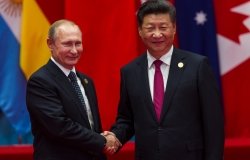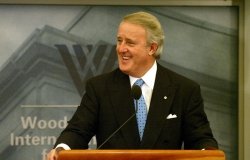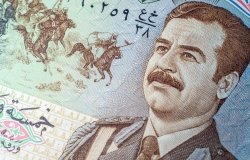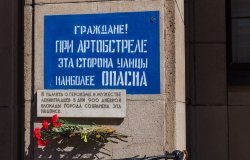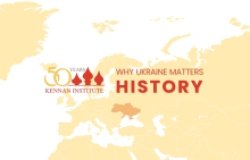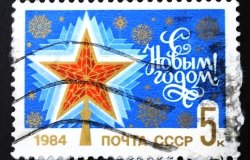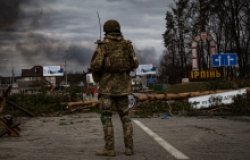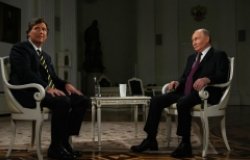The Russian Orthodox Church in the Post-Soviet Period: Challenges and Responses
Olga Kazmina, Professor, Department of Ethnology, Moscow State University; Visiting Fulbright Scholar, Department of Religion, Emory University; and Former Regional Exchange Scholar, Kennan Institute
Overview
“The new religious reality in the post-Soviet period brought religious freedom, along with the idea of religion as a personal matter, a novelty that actually generated many challenges for the Russian Orthodox Church,” stated Olga Kazmina, Professor, Department of Ethnology, Moscow State University; Visiting Fulbright Scholar, Department of Religion, Emory University; and Former Regional Exchange Scholar, Kennan Institute at a 25 April 2011 Kennan Institute event. “The essence of many of those challenges,” she continued, “was how to cope with this inherited idea of religion as a part of culture and new idea of religion as a personal matter.”
In her analysis of the Russian Orthodox Church and its recent adaptations, Kazmina discussed the role of the Church in both pre-Soviet and Soviet times. From pre-revolutionary Russia, the modern Russian Orthodox Church inherited the “close interconnection of religious and ethnic identities, which considered religion a powerful force of cultural tradition and an integral part of ethnic tradition.” In the secularized Soviet Union, “religion was preserved as a custom of rites and rituals, and hence, a part of ethnic culture—not as a private affair, but a part of general, cultural, historical and ethnic traditions.”
Kazmina then examined how these trends impacted the recent history of the Russian Orthodox Church by dividing up the past two decades into three periods, during which the religious principles evolved to correspond with the changing ideals of the Russian population. In the early 1990s, a new Russian society witnessed drastic changes in everyday lifestyle. “One of the novelties was increased religious diversity,” affirmed Kazmina: “religious pluralism in the early nineties was favored both by the mood of the population, which was in that time open to everything new, and by the religious legislation.” The Law on Freedom of Beliefs, adopted in 1990, advocated “a personal choice of religion, on the perception that religion is the private affair of a person.” The law placed all religious denominations on equal footing, thereby favoring the influx of many religious organizations into Russia. Kazmina explained that this perceived equality fostered a sense of competition among religious groups, as well as introducing the issue of proselytism among these different religions in Russia.
The Russian Orthodox Church’s reaction, the speaker noted, was to go on the defensive and adopt an “isolationist” position, which involved emphasizing the Church’s cultural and ethnic roots in connection with the history of the Russian people and perceiving the Russian land as historically canonical territory. By the late 1990s, this initiative became more widely accepted, as the feelings of the general population changed from the euphoric embrace of Western values to more traditional and nationalistic ones, while the recognition of the historical connection between religion and ethnicity grew stronger. The Russian Orthodox Church itself began to view “other religious denominations through the prism of ethnicity,” Kazmina noted, “resulting in better relations with the non-Christian religions of Russia—the religions of our neighbors.”
By the mid-2000’s, proselytizing was no longer among major concerns and the Russian Orthodox Church fostered improved relations with other Christian denominations, “preserving Christian morals and values.” The Church “strengthened its position in the country and in society,” exercising a very strong influence, and even began to expand to foreign countries, including those not predominantly Orthodox.
Kazmina concluded that over the past two decades, the views of the Russian Orthodox Church on religious diversity and pluralism were shaped by its own position, by its own feeling of security or insecurity. By concentrating on the “long-existing tradition of inter-correlation between religion and ethnicity” and adapting to the idea of religion as a personal matter, the Russian Orthodox Church was able to survive the changes in Russian society and the influx of new religious ideals, as well as strengthen its position as a vital element of Russian culture.
By Christian Dallago
Blair Ruble, Director, Kennan Institute
Speaker
Hosted By

Kennan Institute
The Kennan Institute is the premier US center for advanced research on Russia and Eurasia and the oldest and largest regional program at the Woodrow Wilson International Center for Scholars. The Kennan Institute is committed to improving American understanding of Russia, Ukraine, Central Asia, the Caucasus, and the surrounding region though research and exchange. Read more
Thank you for your interest in this event. Please send any feedback or questions to our Events staff.
